The Animals
West African Crowned Crane
General Info
Common Name: West African Crowned Crane or Black Crowned Crane
Scientific Name: Balearica pavonina
Physical Appearance: The body plumage is primarily dark gray. The head has a crown of stiff golden feathers, and the sides of the face are white with a red cheek patch. Males may be larger but otherwise identical to females.
Length/Weight: Both sexes are approximately 3 feet tall, males may be larger; both sexes weigh approximately 8 lbs.
Lifespan: Up to 20 years in the wild, 40 years in captivity.
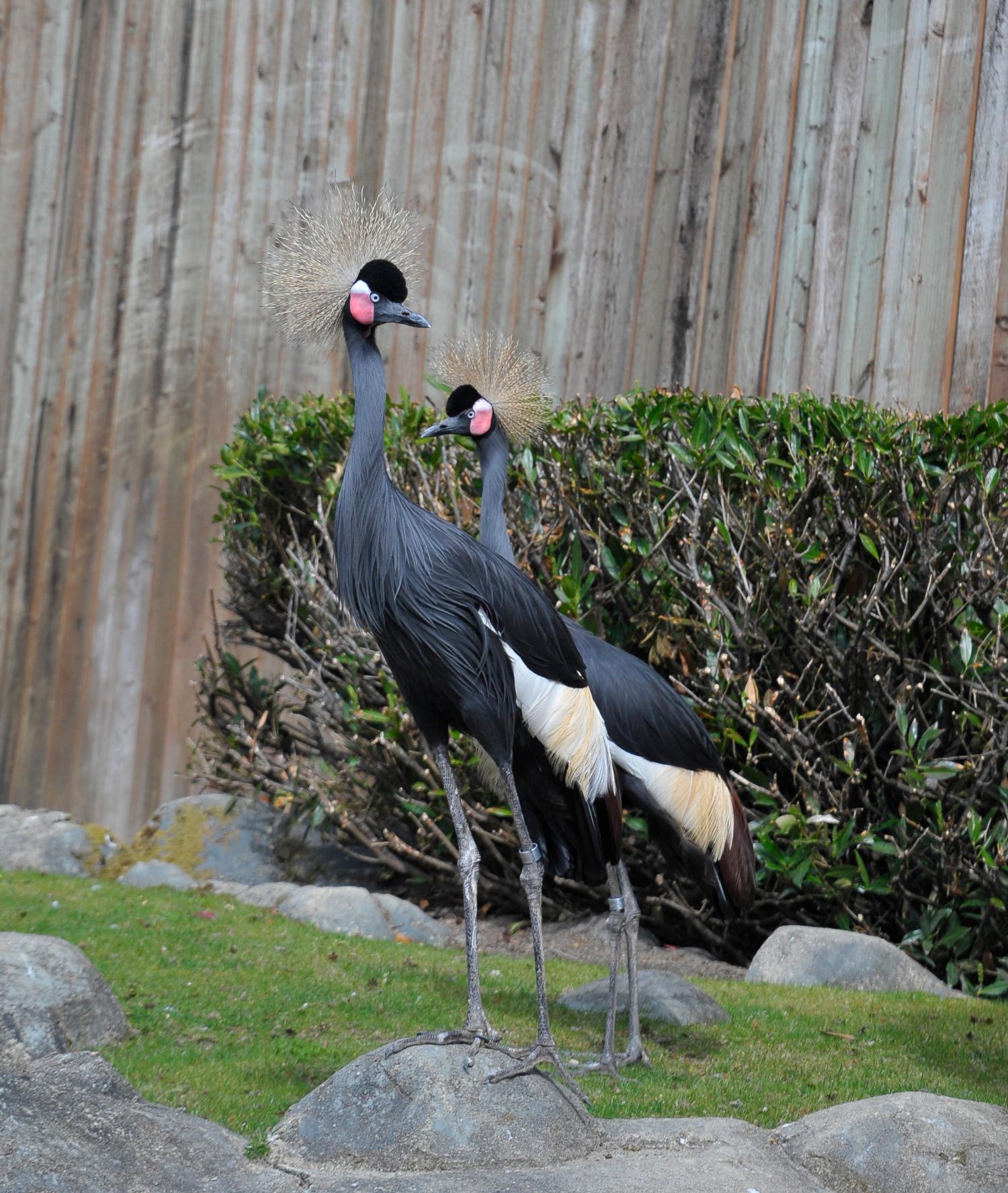
Environment
Range: West African Crowned Cranes are native to western Africa in the Sahara and Sudan savannah region of Africa, from Senegal and Gambia on the Atlantic coast to the upper Nile River basin in Sudan and Ethiopia.
Habitat: Open landscapes such as extensively marshy areas, low moors, rifts, bogs, along the shore of lakes, ponds, agriculture fields, and grasslands.
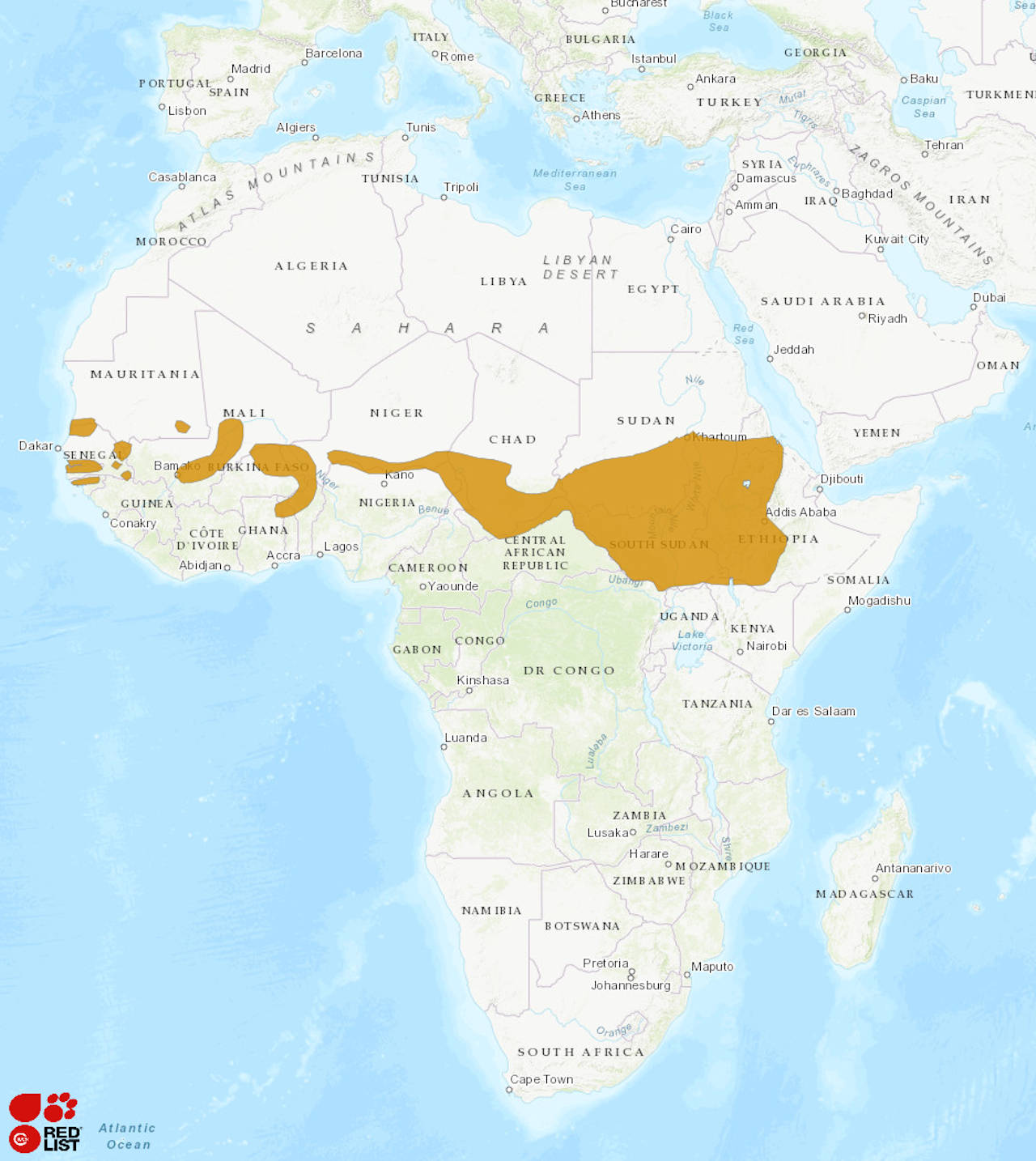
Diet
Generalist omnivore. Eating the tips of grasses, seeds, insects, and other invertebrates, and small vertebrates. They tend to forage in upland areas frequently near herds of domestic livestock where invertebrates occur in greater abundance. Seeds from agricultural crops are a most important food source. Unlike Grey Crowned Cranes, farmers do not seem to consider Black Crowned Cranes as agricultural pests.
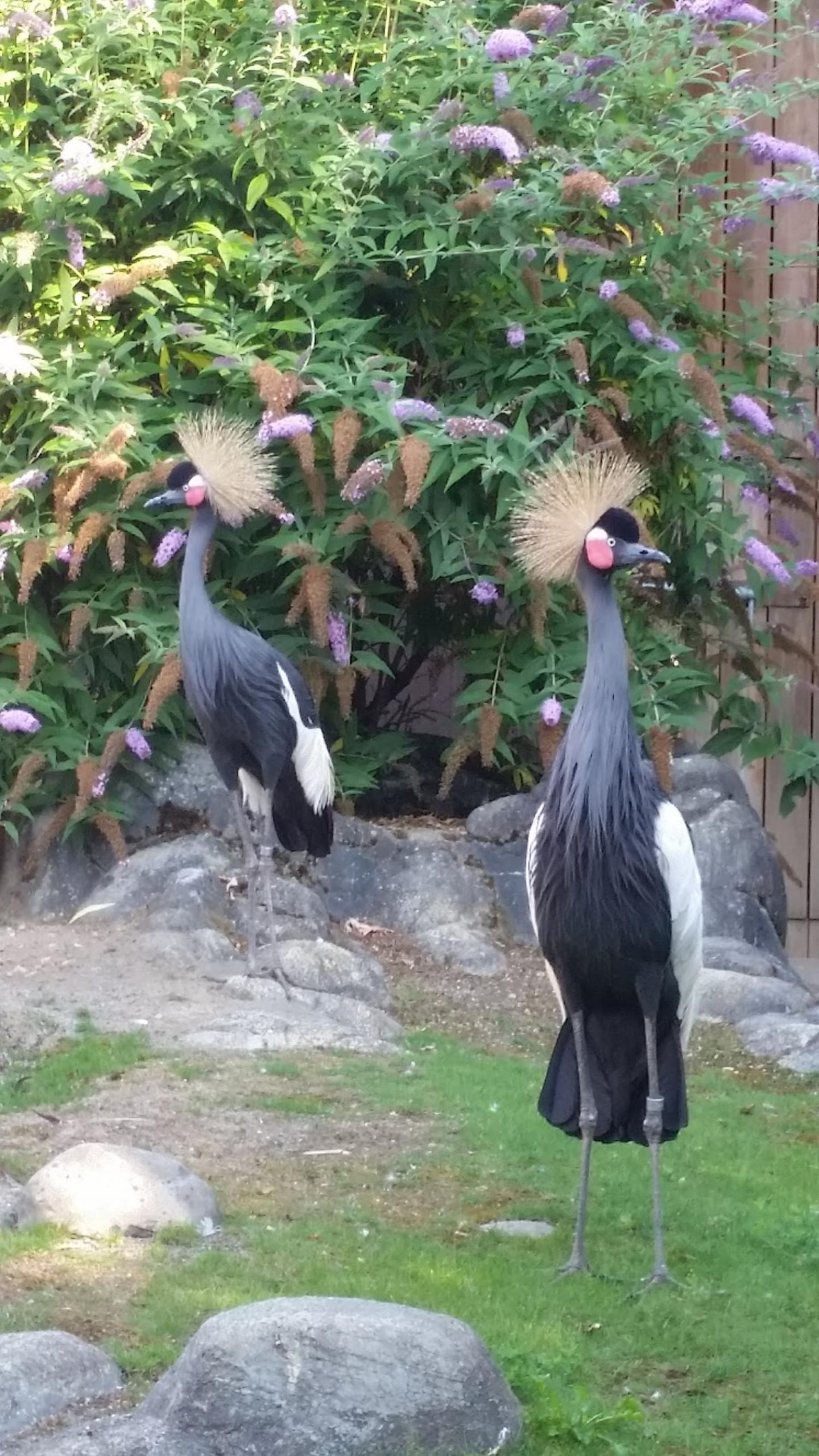
Reproduction
Breeding occurs during the wet seasons. Nests are composed of reeds and grasses. The two to three bluish-green eggs are incubated for 28-31 days by both the female and male. Both parents care for the young. Flight stage is reached by the young after about 90-120 days depending on nutrition.
Even within large flocks, the birds can be seen to move about in pairs, suggesting a prolonged pair bond. Within such flocks, displays are not infrequent, and mutual preening, especially of the neck of feathers, has also been observed.
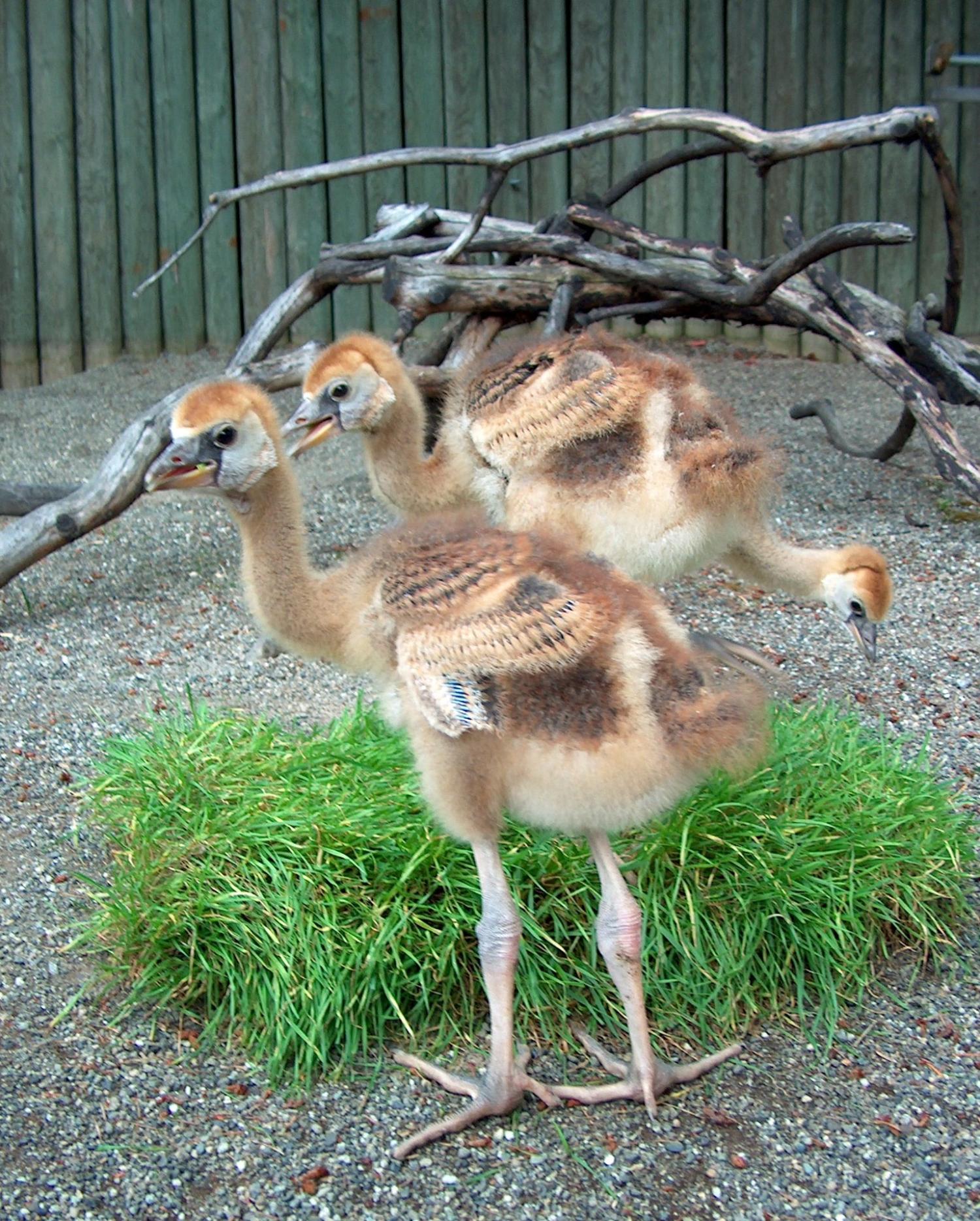
Conservation
Status:
Listed on IUCN: VULNERABLE
Population Trend: DECREASING
Efforts: Threatened by habitat loss, warfare, droughts, trapping for domestication, and illegal international trade. Trade has been suspended in Sudan, South Sudan, and Guinea. Collaborative projects have been recently launched to document population sizes, monitor habitat loss and degradation, hunting pressure and discourage hunting and irresponsible pesticide use through awareness campaigns. Discussion of reintroduction into areas where the species no longer exists, e.g. Nigeria.
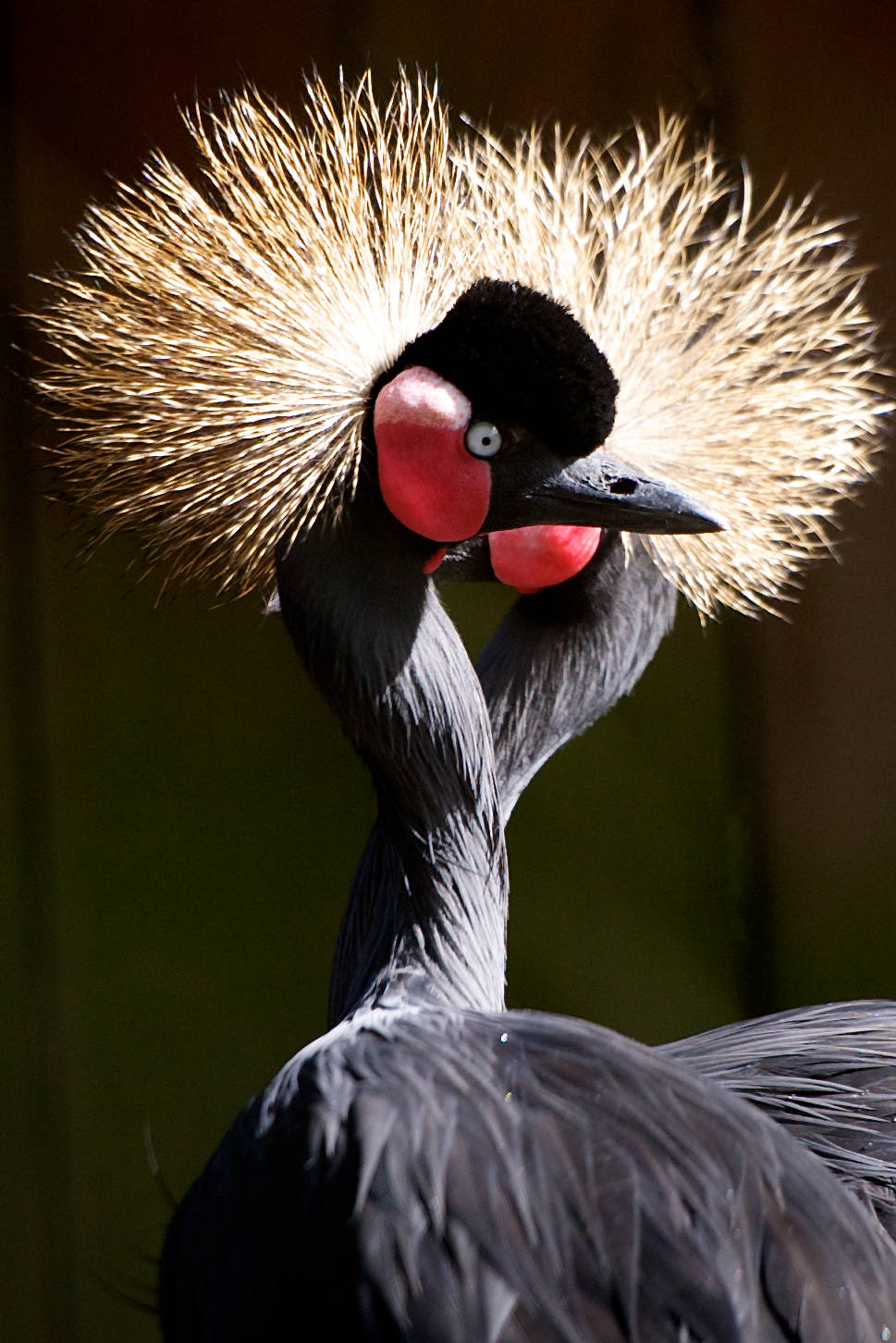
Important Facts

Some African cultures believe they bring rain, while others have incorporated the crane’s dances into their rituals.
West African Crowned Cranes are also known as Black Crowned Cranes and are the national bird of Nigeria. They are now extinct in Nigeria.
Crowned Cranes are the only cranes that are able to roost in trees.
Sources:
Magic of Cranes
IUCN: REDLIST
International Crane Foundation



